6 Things You Can Do Right Now To Help Your Child With Selective Mutism.
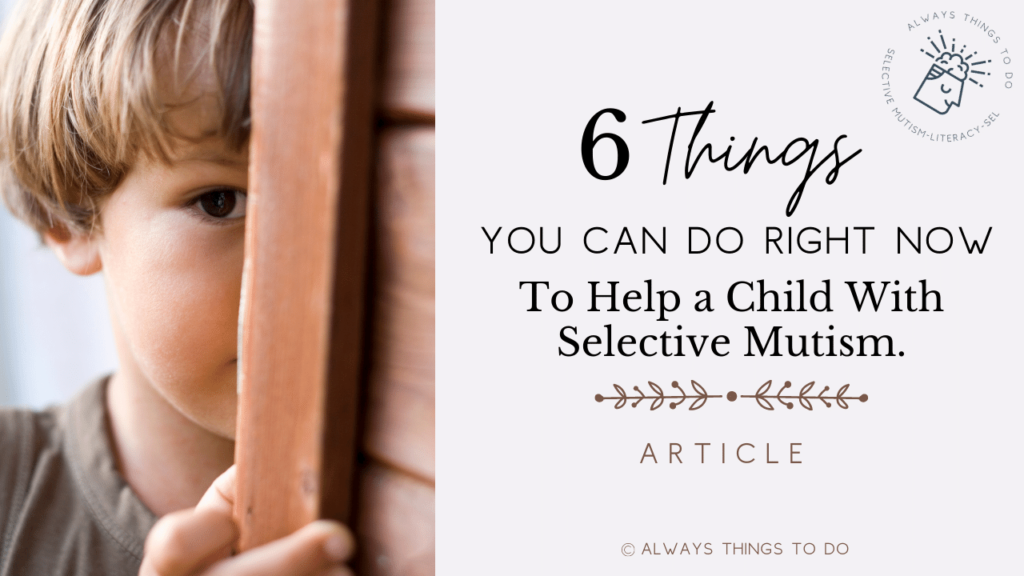
This post will answer many of your questions such as:
- What does selective mutism mean?
- What are the selective mutism characteristics?
- Is selective mutism genetic?
- What triggers selective mutism?
- What is selective mutism disorder?
- How do you treat selective mutism?
Apart from that, I will give you 6 actionable steps you can start incorporating in your day-to-day functioning now to help your child with selective mutism.
To skip to the section about 5 actionable steps, click here.
How Does Selective Mutism Work?
In our family’s more than 3-year-journey with selective mutism disorder, we have learned that selective mutism is not only difficult to spot and recognize, but it is also difficult to manage and address.
What does selective mutism mean?
Selective mutism is an anxiety disorder that impacts a child’s ability to speak in many social settings and at times at home. Simply speaking, a child with selective mutism is “mute” in most social settings, which has a huge impact on many areas of a child’s life, including social interactions, academic development, social-emotional development, and others.
To get a more detailed explanation of what selective mutism is as a disorder, read the “What Is Selective Mutism?” “Is Selective Mutism a Disability?” will explain why selective mutism is a disability and why it’s important for parents to make sure a child gets the best support in a school setting through an IEP or 504 plan.
What are the selective mutism characteristics?
A rare disorder, selective mutism disability is very hard to spot unless there is an educator or health provider who had a previous experience with selective mutism and is aware of the nuances of this disorder.
Selective mutism disability has many specific symptoms and behaviors that many children display. These symptoms and behaviors are the key indicators that serve as red flags indicating a child might have selective mutism. To learn about “70 Selective Mutism Symptoms and 3 Diagnostic Criteria” read this article.
Even though many symptoms and behaviors listed in the “70 Selective Mutism Symptoms and 3 Diagnostic Criteria” are common to many children with selective mutism, it’s important to get a proper diagnosis as well as isolate many other disorders and conditions that might “accompany” selective mutism.
Early diagnosis of selective mutism gives a child a much bigger chance at being successful in responding to therapies, interventions, medication treatment (if decided).
Is selective mutism genetic?
Many parents, including me, are interested in the question of whether selective mutism may be genetically inherited.
While many parents of children with selective mutism do have a predisposition for anxiety or have suffered from selective mutism disorder themselves, the research on the causes of selective mutism is inconclusive.
The bottom line, whether selective mutism is genetically inherited or there are other factors in play, the biggest focus should be on early detection and treatment.
To read more in detail about the causes of selective mutism read “What Are the Causes of Selective Mutism?” It may answer many of the questions about what may trigger selective mutism and why selective mutism happens.
“Diagnosis of Selective Mutism: Simple Parent Guide and Steps to Take” article will give you a clear step-by-step plan for what to do to diagnose your child.
Finally, how do you treat selective mutism?
Selective mutism is rare and the research about selective mutism is still not robust enough to answer all the questions and address all the nuances in selective mutism diagnosis and treatment.
At the same time, in my family’s experience and from my personal research about selective mutism, treatment of selective mutism is every individual and has to be geared to the individual child’s characteristics, level of anxiety, and how selective mutism manifests in a child.
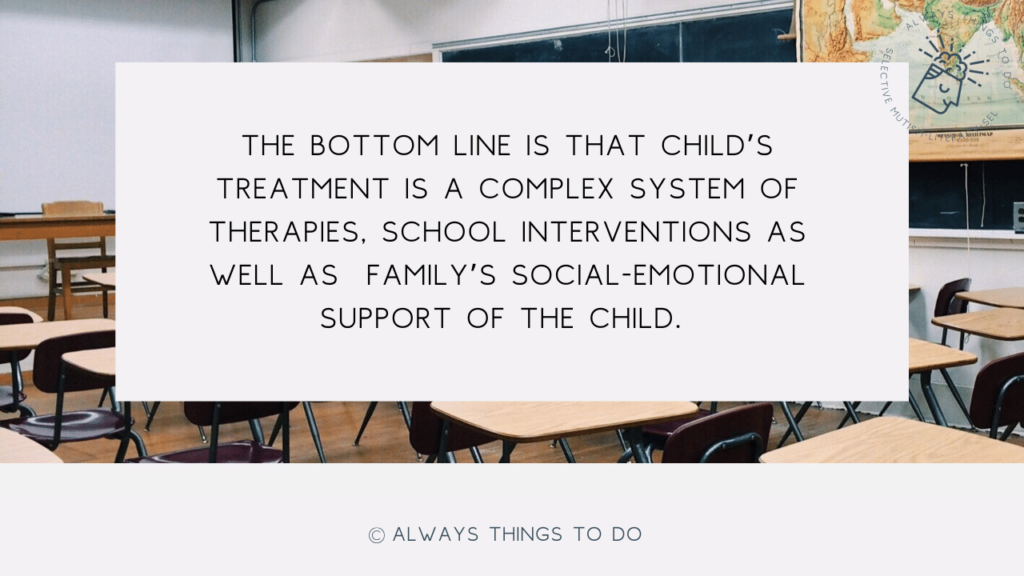
Some children are very responsive to behavioral and cognitive-behavioral treatments as well as school interventions. Others have a hard time progressing even with support and interventions.
Some may respond positively to medication for anxiety and show dramatic changes in anxiety levels as well as speaking patterns. Other children have a hard time responding to and getting the benefits of being on medication.
The bottom line is that child’s treatment is a complex system of therapies, school interventions, and family’s social-emotional support of the child. Things always need to be adjusted, treatment methods modified to find the treatment and accommodations that provide the best response from a selective mutism child.
To get a more detailed picture of selective mutism treatment as well as school interventions read “How Do You Treat Selective Mutism?” and “Selective Mutism IEP/504 Goals, Choice of Therapy, Activities & How to Normalize Anxiety for an Anxious Child.”
Things You Can Do Right Now To Help Your Child With Selective Mutism.

1) Monitor your emotional state.
It might seem absolutely off-topic, but monitoring one’s emotional state is such an important condition for a parent of a child with selective mutism.
My conviction that a child with selective mutism may mirror a parent’s anxiety and emotional state comes from the observation of my child for more than 2 years.
Sensory processing issues are very common for children with selective mutism. Tastes, textures, smells, sounds, colors may trigger a huge emotional response.
I believe children with selective mutism very often display extra sensitivity to their surroundings. They notice other people’s reactions and emotions. Parents’ emotional state may trigger or contribute to their tantrums, emotional distress, or even their self-perception.
My personal experience with my child has taught me some important things about my own anxiety. No parent is left unaffected by selective mutism issues. It’s a hard journey and those who have not experienced bringing up a child with selective mutism first-hand cannot truly understand how emotionally draining and even devastating it may be.
Imagine a child being triggered by any little factor (light, texture, music, conversation, jealousy, etc.), having continuous tantrums and meltdowns after school in many public places, having difficulty adjusting and functioning at school at all levels (from the bathroom to academic issues), and many more difficulties.
I remember the day when my child’s selective mutism was at the worst level. It was unbelievably hard to function for the whole family. It was emotionally debilitating, and self-blaming was something I was doing for quite a long time.
Exhausted and tired, I was not able (most of the time) to be there for my child emotionally when her tantrums would happen. My sadness would trigger her mood swings and my awkward and minimal emotional support would not alleviate her emotional struggles.
The lessons from my 2 years of struggle have taught me something important: I need to take care of my emotional state before I can help my daughter.
I believe in it because a parent who has his/her cup full and is rested is more capable to respond to the child’s emotional needs and put out the fires of the tantrums and meltdowns.
While being emotionally rested seem quite impossible for a parent of a child with selective mutism, what’s important to realize is that the best chance of getting to normalcy for a parent of a child with selective mutism is to make small shifts in their habits and as well learning about tips and trick of addressing emotional demands of their children.
These are some steps you can take to lessen your burden in addressing the needs of your child with selective mutism:
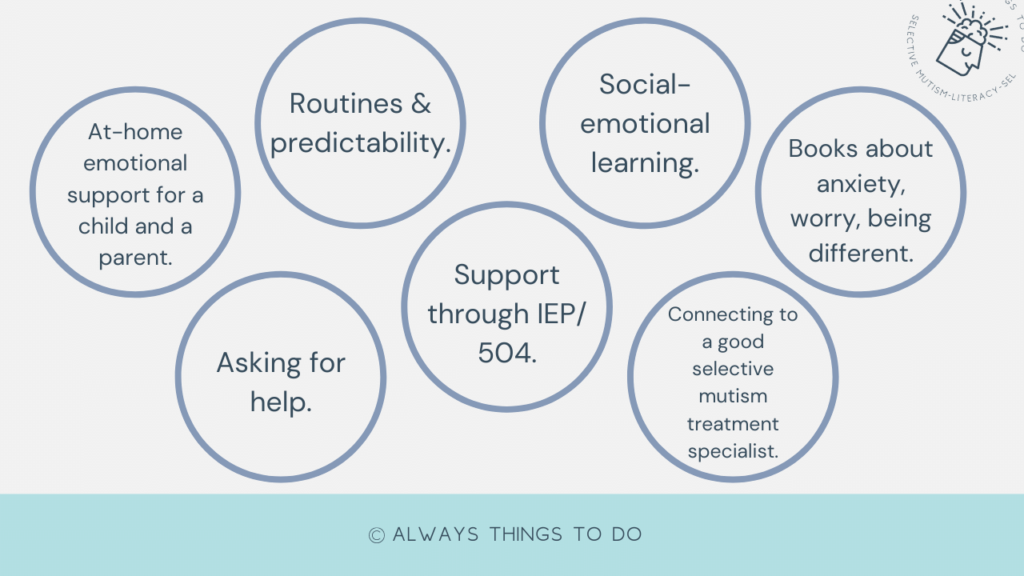
- Ask for the maximum support in a school district through evaluation of your child to be eligible for special education support (IEP/ 504 plan).
- Ask if the school provides friends groups or any types of clubs, etc. where your child can socialize with other kids and his/her social-emotional learning can be supported.
- Embrace routines and predictability. Your child will function best if there are routines established at home and predictable activities are there for your child.
- Explore books about anxiety and feelings to read for your child. Todd Parr’s books were a hit in my family.
- Learn about the tools to address an angry child’s issue, disobedience reluctance towards school. Check out this “Selective Mutism Home-School Parent Toolkit” with “How to help an angry child” and “Selective Mutism Toolkit: most common issues addressed” and other resources.
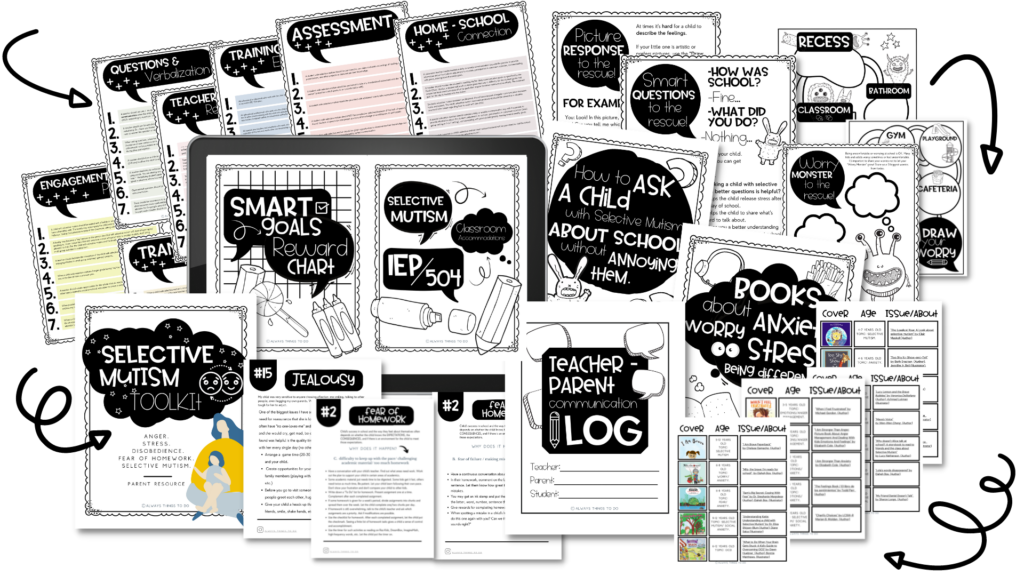
- Do not hesitate to ask your partner or other family members for help. Believe me, it’s hard to do it on your own. Make sure you have time and space for your personal needs even if it’s just a 20-minute walk without children.
- Find a really good selective mutism therapist that can give you emotional support as well.
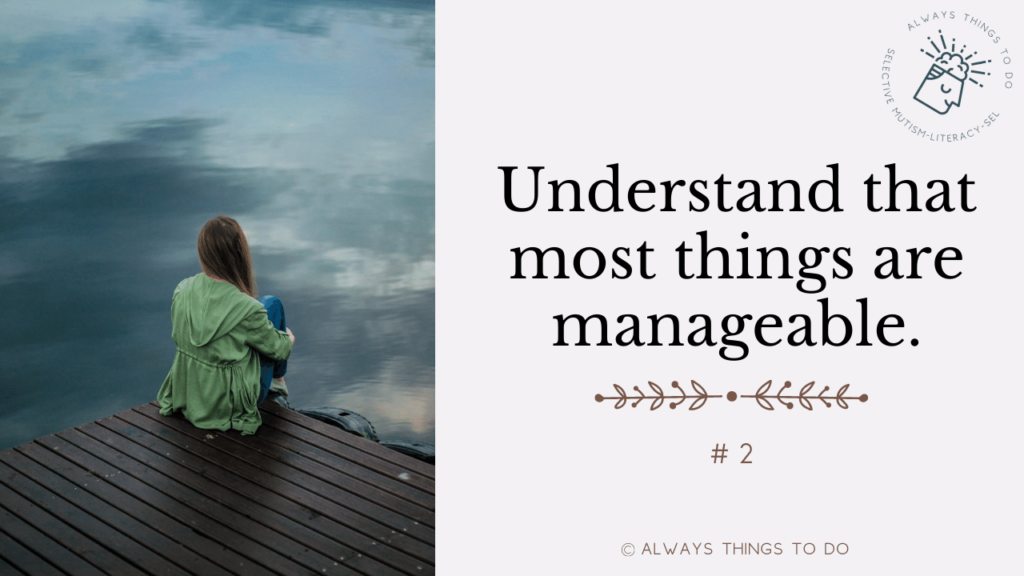
2) Understand that most things are manageable.
I would never ever imagine that things with selective mutism can be manageable. Literally, two years ago, the problems related to selective mutism were escalating and most of the time I felt defeated and lost.
Luckily, things changed because I desperately needed my family to come back to normalcy.
At the beginning of the journey when you are in the midst of getting the diagnosis and help for your child, the goal of having things under control is unrealistic.
However, once the diagnosis is done and you are moving towards communication with the school and thinking about accommodations, then things will start falling into place.
In my family’s experience, these seem to be the most essential shifts that allowed us to get back to normalcy and create better experiences for my daughter:
- Finding the selective mutism professional and scheduling regular treatment sessions.
Working with a selective mutism treatment professional is pricy because most SM treatment professionals are out of network. The investment is, however, worth it if the selective mutism treatment professional is really an expert or has experience in treating selective mutism.
Selective mutism association has a page listing selective mutism professionals around the U.S. We found our selective mutism professional right there.
- Evaluating my child to be eligible for special education services and getting an IEP (individualizes educational plan). Read this article to find out more what you need to do.
- Establishing a good connection to a classroom teacher, special education teacher, speech teacher, school psychologist and getting them on board with accommodations.
- Managing tantrums at home and providing emotional support (social-emotional learning).
- Starting a lower doze of medication after two years of selective mutism treatment.
The shifts I mentioned above are time- and effort-consuming, and that’s OK. Expecting things to change quickly is an unreachable target. Things will move slowly, but the change will come. It will.
The bottom line, put all the necessary things in place for the child with selective mutism to start treatment and have accommodations targeting selective mutism at school. The more robust support is provided in an educational setting, the more manageable selective mutism will become.
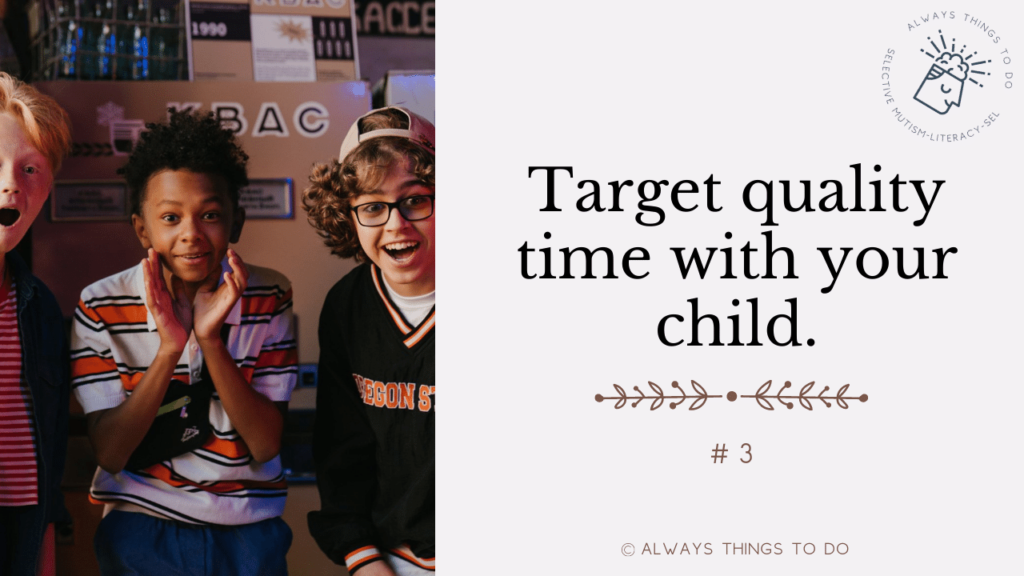
3) Target quality time with your child.
A child with selective mutism experiences emotions on a day-to-day basis and they look for their emotions to be accepted and understood. Tantrums of children with selective mutism are rooted in anxiety and triggered by emotional and sensory overload.
As a mom of a very sensitive child with selective mutism, I have realized how quality time with my daughter shifts her mood and helps her cope with big feelings.
There are many advantages of spending quality time with a child who experiences selective mutism:
- The time will allow a child to release emotions in a way that is not too distressful for a little one. What a child needs is an absolute acceptance of emotions. On hard days of after-school tantrums I would just sit next to my daughter without asking her about school and just being there when she is ready to talk to me.
- Quality time with a child is the opportunity to teach a child about emotions and feelings, and that all emotions are OK. I would read books with my little one about anxiety, being different, making mistakes, etc. Todd Parr books are amazing to teach the above-mentioned things to a 5- or 6-year-old child.
Explain your own emotions to a child. Being a parent of a child with selective mutism is hard work. You might also experience down days and sadness. Explain your feelings to a child. Modeling how to express feelings for a child on hard days is the best lesson a child can have.
- Quality time for a child with selective mutism is also the time a child spends on his/her own.
My daughter used to have regular tantrums after school and on weekends because weekends were less predictable and less structured, unlike school days. She would feel moody, irritable, clingy, bossy, and demanding.
To give her an opportunity to have her own safe space, we build a house out of the carton boxes. It was such a great idea. My child would hang out in the house when she felt most irritable and annoyed by everything happening around her.
When she grew up, she would just spend some quiet time in her bedroom surrounded by toys and things she loved. The quiet quality time can become an important routine to adopt for a child with selective mutism.

4) Give your child an opportunity for self-expression.
Any child longs for connection to peers, self-expression, and acknowledgment of who they are. For a child with selective mutism, communication with and connection to peers may be impossible at some point.
Limited from the communication outside of the house and being unable to truly connect to peers at school, a child with selective mutism is heavily impacted by the inability to express their feelings and connect to peers based on their interests.
One of the best pieces of advice our selective mutism therapist gave us was to provide opportunities for my daughter to express herself.
However, as you may relate, bringing a child with selective mutism to after-school clubs is a very difficult task. My own child would refuse to participate and even be in the places we would bring her (dance club, gymnastics, judo, etc.). Participating in after-school or extracurricular activities may not be quite possible for a child with high levels of anxiety. It did not work for my child.
Among some other possibilities for a child to have opportunities for self-expression are:
- Online, zoom classes for drawing, crafts, etc.
- Playdates with a selected classmate.
- Boys and Girls club activities with the selected classmate.
- At-home opportunities to do crafts with family members.
- Games with family members.

5) Embrace consistency and routines.
The anxiety of a child with selective mutism can be partially addressed by making sure there are routines and consistency in a daily schedule.
Children with selective mutism thrive in structured environments and predictability. This applies to a school as well as a home structured environment.
Weekends may seem the hardest for a child with selective mutism because these days are less structured than school days. My child would be more irritable and have more tantrums on weekends until I realized why she craved routines and consistency.
On school days, make sure after-school-time is laid out for a child and he/she knows what’s coming.
For example: coming home – play – dinner – homework – reading with a parent – cartoon time – bath time – sleep.
Here is the suggestion for school routines that might work for a child. Read “Routines For School: How To Help a Reluctant & Anxious Child Thrive in Daily Routines and Reading.”
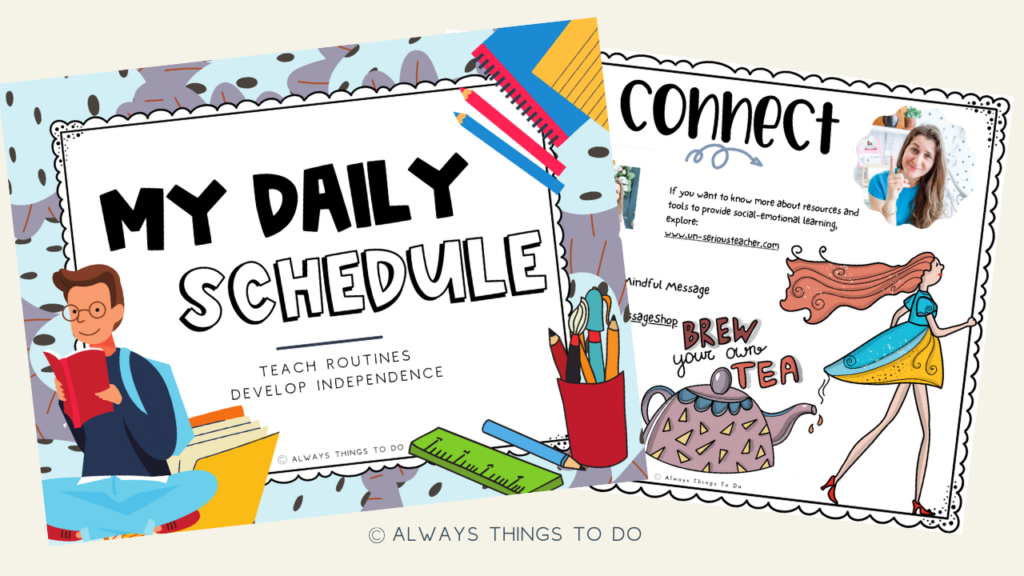
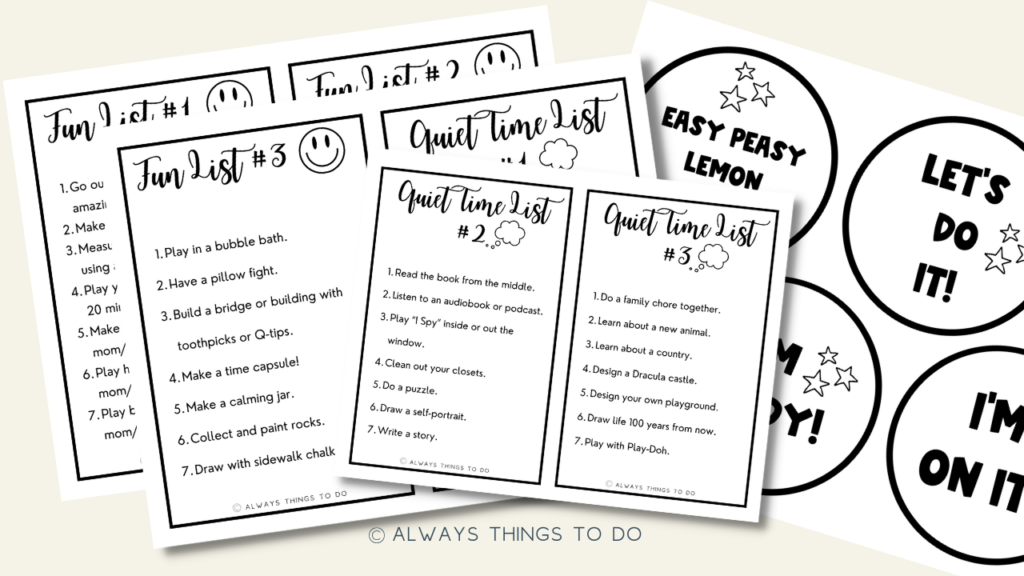
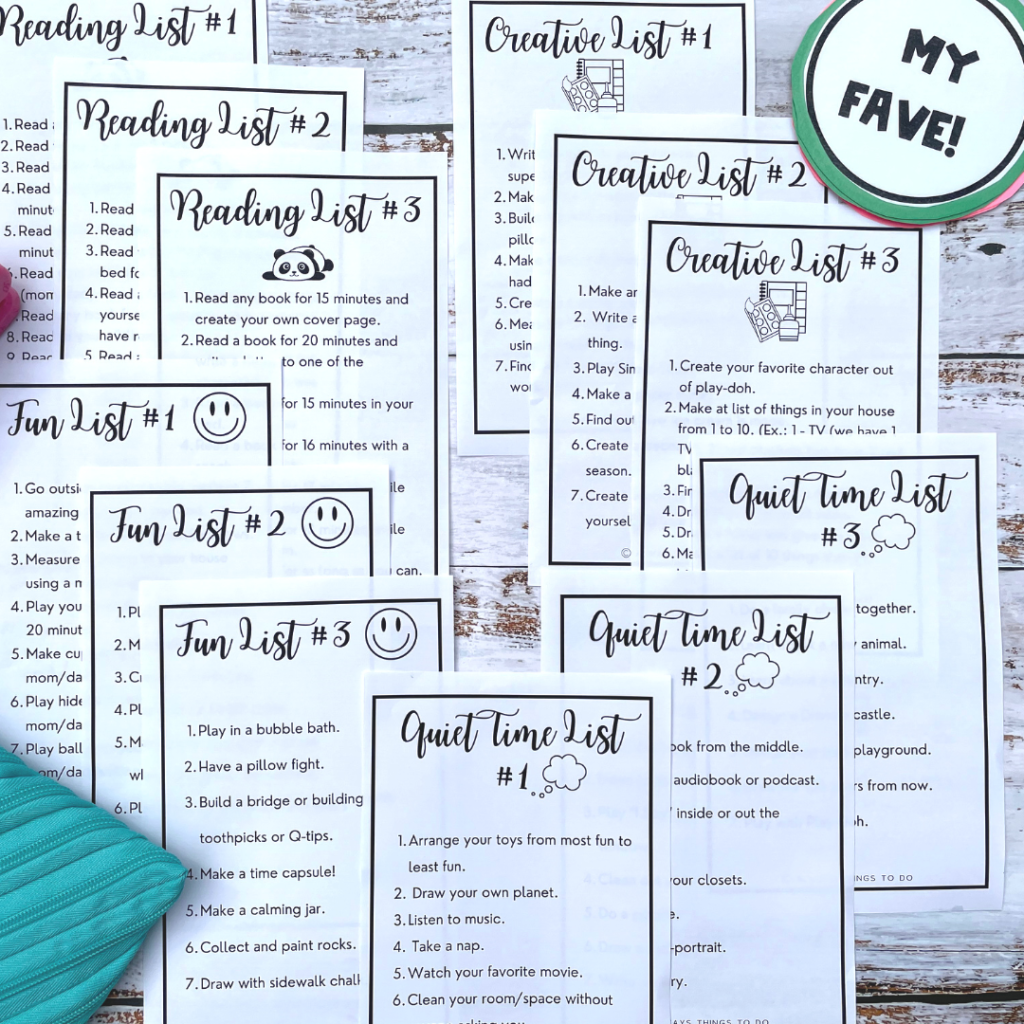
On weekends, make sure there are plans for a child to be engaged in some activities he/she is looking forward to.
What worked for my child on weekends is the time outside and at-home crafts.
At home, I have noticed my child was engaged and feeling calm with hands-on activities such as:
- Coloring
- Painting
- Playing with play-doh or moon sand
- Cooking with me
- Building forts
- Building home obstacles with pillows, blankets, etc.
- Playing kitchen
- Etc.
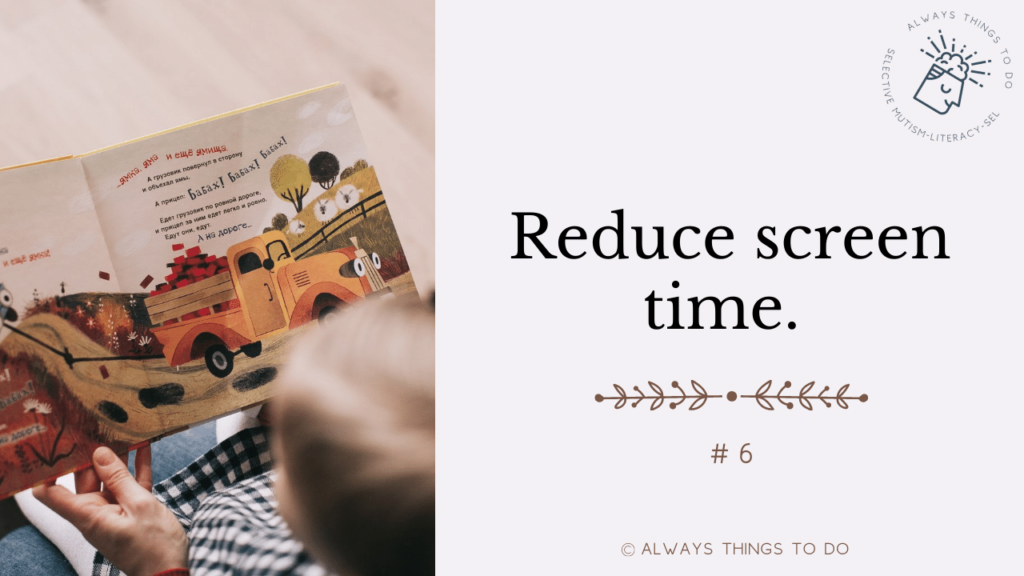
6) Reduce screen time.
It may sound too obvious that screen time contributes to kids’ irritability, shorter attention span and triggers mood swings. Many parents do allow limited screen because, let’s face it, sometimes we need time to work or half an hour quiet time at home.
I used to allow my child limited screen time as well. However, over time I have realized again and again that my daughter was doing so much better without ANY screen time or very limited screen time.
We shifted from every-day limited screen time (20 minutes) to no screen time on school days, with limited time over the weekend. It worked out really well, and I noticed my daughter being more engaged with hands-on activities (coloring, painting, playing with play-doh or moon sand, building forts, etc.) and being calmer during such a playtime. This, as a consequence, leads to fewer tantrums and big emotions.
Limiting screen time or even eliminating the screen time may be hard for a child at first, but it surely works, believe me. For a child with selective mutism, limiting or even eliminating screen time can be one more thing that can contribute to better emotion regulation.
If you liked the information in this post, make sure you explore other posts about selective mutism:
- “What Is Selective Mutism?”
- “Selective Mutism: How To Beat Crisis, Screaming, and Fear.”
- Diagnosis of Selective Mutism: Simple Parent Guide and Steps to Take.
- What Are The Causes of Selective Mutism?
- Is Selective Mutism a Disability?
- How Do You Treat Selective Mutism?
- 70 Selective Mutsim Symptoms & 3 Diagnostic Criteria.
- Selective Mutism Myths: Most Common Concerns Addressed.
- Selective Mutism Classroom Accommodations: What You Need To Know About 504 and IEP.
Check out the expanding library of tools. Go to the selective mutism page and scroll to the bottom section, “Latest Projects.”
Connect with me on social media @alwaysthingstodo.
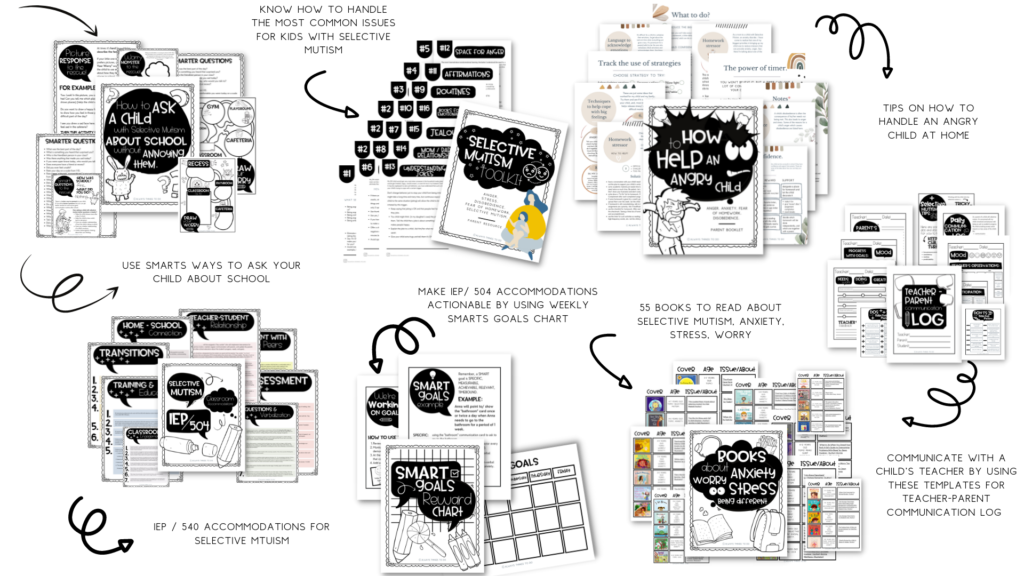



One Comment
Pingback: